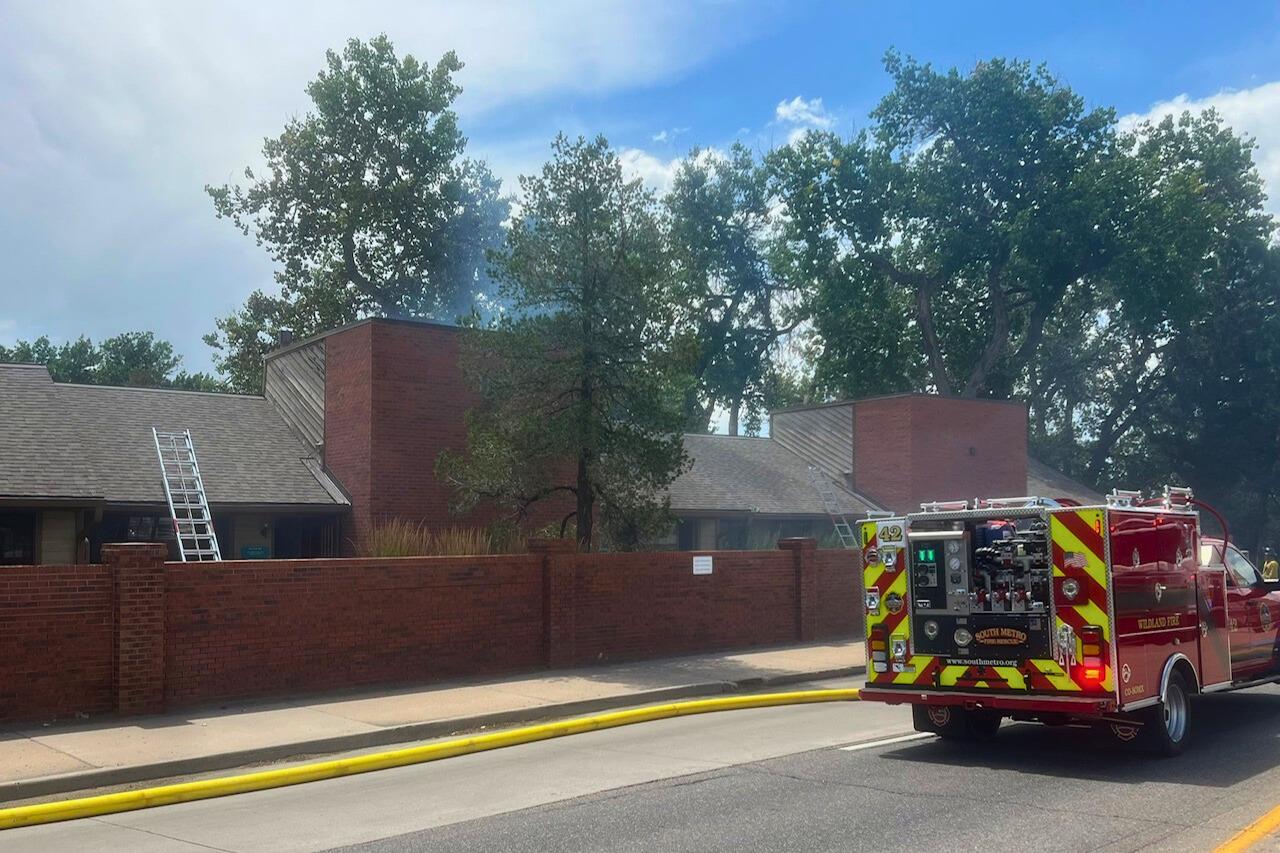During the George Floyd protests of 2020, activists demanding police reform called for local governments to shift money from armed law enforcement to community-led violence prevention.
On Monday morning, Denver Mayor Mike Johnston announced that the city is doing just that.
Denver will move $11 million and 65 full-time employees from the Department of Public Safety, which oversees the police, fire and sheriff departments, to the Office of Social Equity and Innovation to create a new Office of Neighborhood Safety.
Johnston made the announcement in the Holly, a former shopping center in Northeast Park Hill that burned down in 2008 during a gang-related dispute.
The new office will broaden the city’s community relationships on public safety issues. It will also learn what neighbors say they need to decrease crime and increase a sense of safety beyond armed police.
“A lot of it is about getting the right resources in the right places,” said Ben Sanders, executive director of the Office of Social Equity and Innovation, who will be overseeing the work.
The new office would work with other citywide safety agencies to bring resources like added street lights or youth programming to communities that request them. Beyond that, the specifics are somewhat fuzzy and will be more clearly defined over the next few months.
What is clear is that racial equity is front and center in the conversation.
“You cannot create a safer city without clear commitments to racial, social, equity, and justice,” said Sanders.
As he sees it, this is proof that Johnston is leading with those values in mind, even as some institutions and cities pull away from equity-centered work in response to community calls for more police.
Sanders described the new program as a “courageous” partnership between his office and the Department of Public Safety.
Johnston said during the Monday morning announcement of the program that Armando Saldate, the executive director of the Department of Public Safety, supported the shift in resources. Saldate, who fell ill over the weekend, was not at the press conference.
Here’s what we know about how the Office of Neighborhood Safety will work.
All of the youth programs that currently run through the Department of Public Safety will be moved to the new office. So will the Assessment, Intake, and Diversion (AID) Center, an alternative-response facility that takes a public health approach to public safety issues, along with the Office of Community Violence Solutions and the Department of Public Safety’s various Youth Violence Prevention programs.
Part of the Support Team Assisted Response (STAR) program that sends mental health professionals to 911, currently under the Department of Public Health, will be moved into the Office of Neighborhood Safety.
It’s unclear what metrics the city will use to measure success, though some of the data collected under the current programs will continue to be evaluated as the new office measures what is — and isn’t — working about its approach. Whatever metrics the city lands on will be shared with the public.
Sanders says the new office will likely be rebranded in the near future.
Not all members of the community were enthusiastic about Johnston’s announcement.
The Denver Taskforce to Reimagine Community Policing sent out a scathing press release denouncing the plan, accusing the mayor of stealing their work.
“The Mayor rejected the recommendations from the Taskforce, his own ONS transition committee, and City Council members to create an office to support alternatives to policing,” Taskforce head Robert Davis wrote in the statement. “However, after the Taskforce announced plans in February to create a community-led initiative, the Mayor is now launching his own competing initiative.
“It's like a child who abandons a toy until others show interest in it, and then he wants it back,” Davis added. “But it's too late because this initiative belongs to the community, and we will see it through to fruition.”
The announcement came on the same day the Denver Taskforce to Reimagine Community Policing held a meeting with community policing experts to create an action plan for their own community-led Office of Neighborhood Safety and Violence Prevention.
Former mayoral candidate and criminal justice advocate Lisa Calderón, who works with the Taskforce, also chaired the mayor’s Community Wellbeing and Neighborhood Safety committee, though she was disheartened by his initial efforts.
“The Mayor was initially going to bury the initiative within the department of safety where good ideas go to die and bad ideas get funded,” explained Calderón in a statement. “I strongly objected to his plan because it was contrary to community input. Now he's giving the concept to his equity office director who has failed to collaborate with key stakeholders and will be competing against us for limited funding. We will not be co-opted like the STAR program that was started by community organizers sidelined by City officials who grew their agency budgets.”
The mayor insists his office is ready to collaborate with the Denver Taskforce to Reimagine Community Policing and says that more organizations working on the issue are better than fewer.
Diverting $11 million and 65 full-time employees from the Department of Public Safety is a major effort, Johnston said, and requires central communication within the city. Now that the work is done, he’s ready to resume conversations with the Taskforce.
“We're willing to work with anyone, including that outstanding Taskforce, in the work that they're trying to advance,” said Sanders. “We want to move forward the work of neighborhood safety, right? To me, the prerequisites are easy. You care about the people being most negatively impacted. You're more invested in advancing the work than you are in advancing yourself. And you want to come to a table of folks who feel the same way.”













